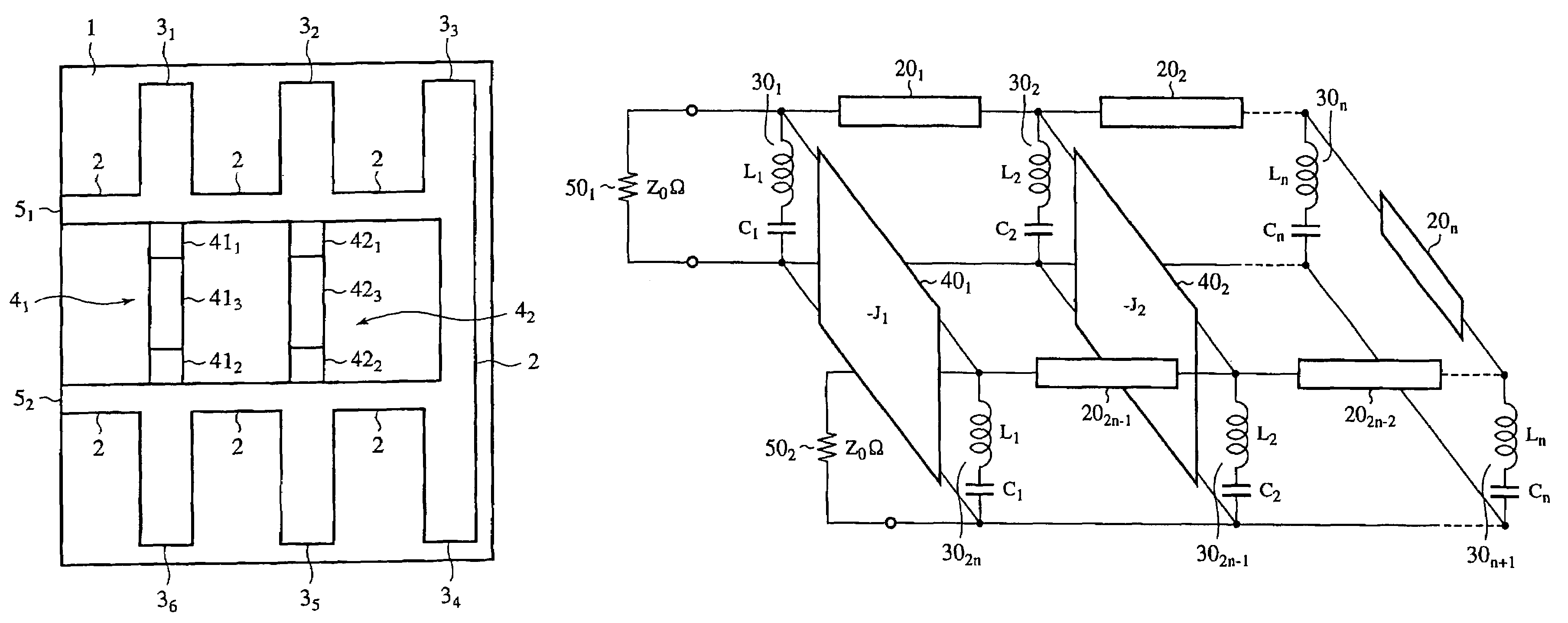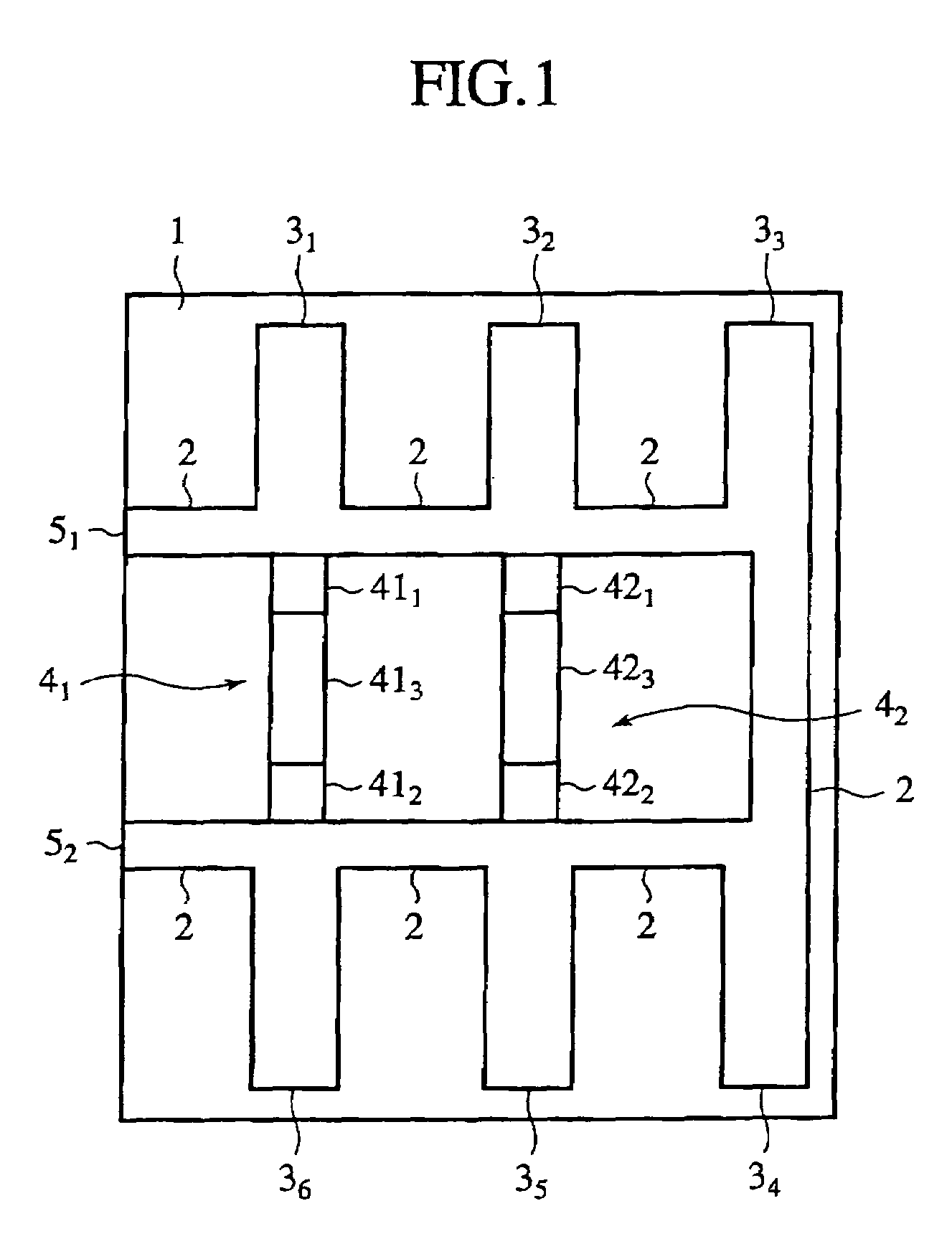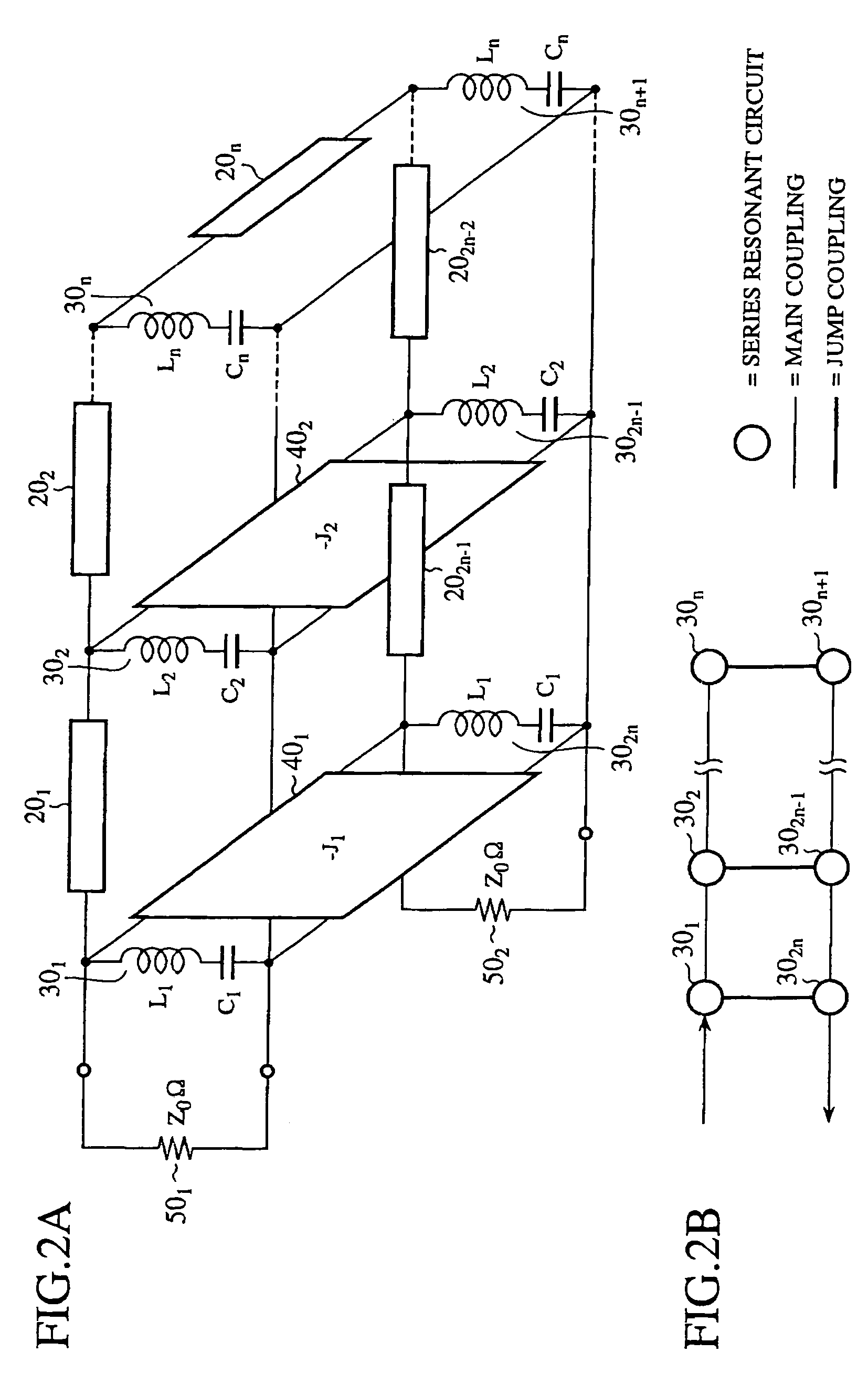Band rejection filter with attenuation poles
a band rejection filter and attenuation pole technology, which is applied in the direction of electrolysis components, electrical equipment, waveguides, etc., can solve the problems of increasing the circuit scale, difficult to provide a sufficient attenuation in a frequency range close to the resonance frequency, etc., to reduce the number of resonant circuits, improve the attenuation characteristics of the band rejection filter, and reduce the circuit scale
- Summary
- Abstract
- Description
- Claims
- Application Information
AI Technical Summary
Benefits of technology
Problems solved by technology
Method used
Image
Examples
embodiment 1
[0024]FIG. 1 is a plan view showing the structure of a band rejection filter with attenuation poles in accordance with embodiment 1 of the present invention. The band rejection filter with attenuation poles includes a transmission line 2 and a plurality of open-ended stubs 31 to 36, each of which is formed of a microstrip line on a dielectric substrate 1, and jump-coupling circuits 41 and 42 formed on the dielectric substrate 1.
[0025]The transmission line 2 is formed of two parallel line segment patterns having ends connected to each other and other ends that are open. The open ends of the transmission line 2 are used as input / output terminals 51 and 52.
[0026]Each of the plurality of open-ended stubs 31 to 36 functions as a series resonant circuit. Each of the plurality of open-ended stubs 31 to 36 has a length equal to the one-quarter wavelength at the resonance frequency of the series resonant circuit, and is projecting to outside from the transmission line 2. In accordance with t...
embodiment 2
[0039]A band rejection filter with attenuation poles according to embodiment 2 of the present invention employs jump-coupling circuits in each of which a high impedance line, a low impedance line, and another high impedance line are connected in series, instead of the jump-coupling circuits according to embodiment 1.
[0040]FIG. 5 is a plan view showing the structure of the band rejection filter with attenuation poles in accordance with this embodiment 2. The same components as those of embodiment 1 or like components are designated by the same reference numerals as shown in embodiment 1, and therefore the explanation of those components will be omitted hereafter.
[0041]A first jump-coupling circuit 41 includes a high impedance line 431, a low impedance line 433, and another high impedance line 432 that are connected in series. The two high impedance lines 431 and 432 have their respective bent portions that are formed so that their impedances are increased, and each of them is formed ...
embodiment 3
[0046]A band rejection filter with attenuation poles according to embodiment 3 of the present invention employs jump-coupling circuits in each of which a microstrip line having a length sufficiently shorter than the wavelength at the resonance frequency of a plurality of series resonant circuits, a capacitor, and another microstrip line having a length sufficiently shorter than the wavelength at the resonance frequency of the plurality of series resonant circuits are connected in series, instead of the jump-coupling circuits according to embodiment 1.
[0047]FIG. 6 is a plan view showing the structure of the band rejection filter with attenuation poles in accordance with this embodiment 3. The same components as those of embodiment 1 or like components are designated by the same reference numerals as shown in embodiment 1, and therefore the explanation of those components will be omitted hereafter.
[0048]A first jump-coupling circuit 41 is constructed of a microstrip line 451, a capaci...
PUM
 Login to View More
Login to View More Abstract
Description
Claims
Application Information
 Login to View More
Login to View More - R&D
- Intellectual Property
- Life Sciences
- Materials
- Tech Scout
- Unparalleled Data Quality
- Higher Quality Content
- 60% Fewer Hallucinations
Browse by: Latest US Patents, China's latest patents, Technical Efficacy Thesaurus, Application Domain, Technology Topic, Popular Technical Reports.
© 2025 PatSnap. All rights reserved.Legal|Privacy policy|Modern Slavery Act Transparency Statement|Sitemap|About US| Contact US: help@patsnap.com



